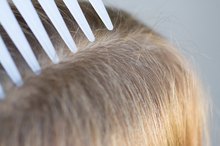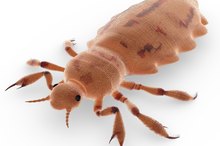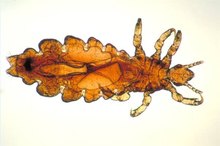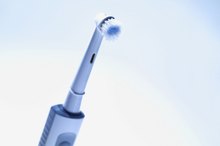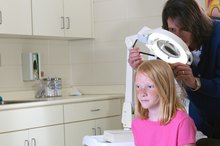How to Remove Nits From Fine Hair
If your child is infested with lice, you can expect to spend hours over the course of several weeks checking her hair for signs of lice or their eggs, called nits. Once found, nits can be difficult to remove because they adhere so tightly to the hair shaft that it can seem as if they are glued to the hair. Special nit combs can help you remove nits and stop the lice life cycle.
Buy a fine-toothed nit comb. Many lice removal products contain nit combs, but if you don’t like the free comb, you can buy a new one at a drug store. If your child’s hair is particularly fine, you may find that a flea comb intended for use by dogs and cats works better to remove nits.
How to Tell If the Nits Are Dead After a Treatment
Learn More
Wet the hair before beginning the nit removal process. If you are using a lice removal shampoo or hair rinse, you can begin to remove nits after you rinse the product from the hair. If you have already treated the hair and are performing a follow-up nit check, moistening the hair with a mixture of one part vinegar to one part water can make nit removal easier.
Divide the hair into multiple sections, each no wider than the width of the nit comb.
How to Clean Hair Brushes & Lice
Learn More
Place the comb close to the scalp and begin combing, working your way down toward the end of the hair shaft. Wind treated sections into a pin curl and clip them against the skin to avoid retreating the same area.
Wipe off the nits caught in the comb on a tissue after each pass of the comb. Dip the comb in a container of warm, soapy water to remove any lingering debris or nits.
Dispose of the tissues by flushing them down the toilet. Flushing helps reduce the possibility of a re-infestation.
Soak the nit comb in 130 degrees F water for at least 15 minutes or soak the comb in the lice treatment shampoo for 10 minutes.
Search for any lingering nits every day for two weeks. The Nemours Foundation reports that lice and nits may be found on the scalp, around the nape of the neck and behind the ears 1.
Tips
Use the nit comb in a well-lit area to ensure that you spot all of the nits. Using a magnifying glass can help you find nits.
If the nit comb doesn't remove all of the nits, the Minnesota Department of Health suggests using your fingernail to dislodge stubborn nits.
A lice infestation is not just limited to children. Anyone in your home can become infected. Ask a friend or family member to examine your hair periodically for signs of lice or nits if you’ve been treating a child for lice.
Related Articles
References
- The Nemours Foundation: Head Lice
- CDC - Lice - Head Lice - Epidemiology & Risk Factors. (2019, October 15). Retrieved from
- Centers for Disease Control and Prevention. Head lice treatment. Updated October 15, 2019.
Writer Bio
Working at a humane society allowed Jill Leviticus to combine her business management experience with her love of animals. Leviticus has a journalism degree from Lock Haven University, has written for Nonprofit Management Report, Volunteer Management Report and Healthy Pet, and has worked in the healthcare field.

